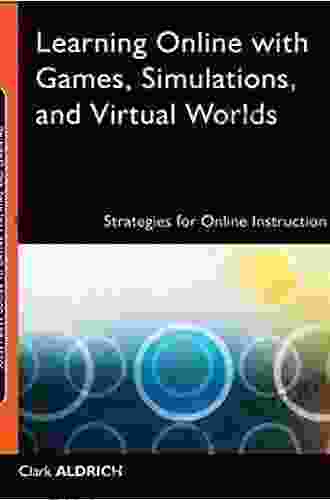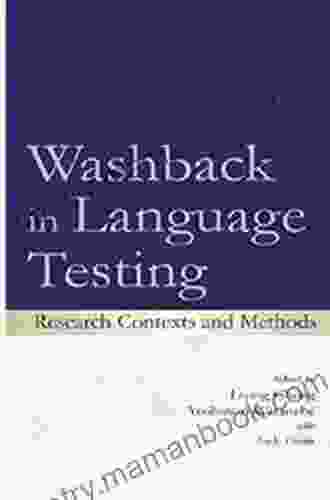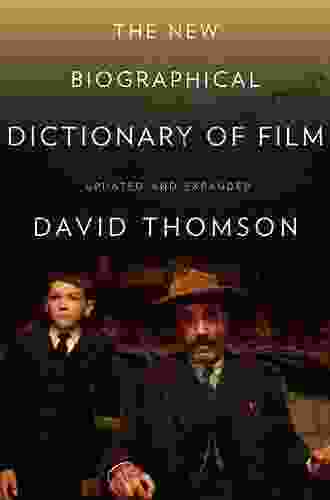Washback in Language Testing: Research Contexts and Methods

Washback, a term coined by Alderson and Wall (1993),refers to the impact of tests on language teaching and learning. It encompasses the influence of tests on teachers' instructional practices, learners' learning strategies, and the overall language education system. Understanding washback effects is crucial for stakeholders involved in language testing, including test developers, educators, and policymakers.
Washback research has been conducted in various contexts, primarily in educational settings:
Educational Settings
- Primary and Secondary Education: Investigating washback on classroom instruction, student motivation, and curriculum design.
- Higher Education: Examining the impact of large-scale standardized tests on language teaching in universities and colleges.
Language Testing Settings
- Test Development: Analyzing the effects of test design features, such as item types, scoring procedures, and reporting formats, on teaching and learning.
- Test Administration: Exploring the impact of test administration procedures, such as time constraints and test anxiety, on washback.
Other Contexts
- Language Policy: Investigating the influence of language testing on educational policies and practices at national or regional levels.
- Language Teacher Education: Examining the role of washback in shaping teacher training programs and curriculum.
A variety of research methods have been employed to investigate washback:
5 out of 5
| Language | : | English |
| File size | : | 3124 KB |
| Text-to-Speech | : | Enabled |
| Screen Reader | : | Supported |
| Enhanced typesetting | : | Enabled |
| Word Wise | : | Enabled |
| Print length | : | 344 pages |
Quantitative Methods
- Survey and Questionnaire Studies: Collecting data from teachers, students, and test developers through surveys and questionnaires to measure perceived washback effects.
- Experimental Studies: Conducting controlled experiments to compare teaching and learning practices before and after the of a test.
- Statistical Analysis of Test Data: Using statistical techniques to analyze patterns in test results and their relationship to instructional practices.
Qualitative Methods
- Case Studies: Examining washback effects in specific educational settings through detailed case studies.
- Interviews and Focus Groups: Conducting interviews and focus groups with stakeholders to gather their perspectives on washback.
- Classroom Observation: Observing classroom practices to identify changes in teaching and learning strategies influenced by washback.
Mixed Methods
- Mixed Methods Approaches: Combining quantitative and qualitative methods to provide a more comprehensive understanding of washback.
Researchers analyze washback effects using various frameworks:
Washback Impact Analysis
- Positive Washback: Beneficial effects on teaching and learning, such as improved student motivation and increased focus on relevant skills.
- Negative Washback: Detrimental effects, such as narrowing of curriculum and overemphasis on test preparation.
- Differential Washback: Washback effects that vary across different groups of students, teachers, or educational settings.
Washback Causality Analysis
- Direct Washback: Impact caused directly by the test itself, such as changes in teaching strategies.
- Indirect Washback: Impact resulting from the perceived importance of the test, such as increased student anxiety.
- Multiple Washback Loops: Interconnected effects where washback influences teaching, which in turn affects student learning, and so on.
Washback research has significant implications for language teaching and learning:
- Curriculum and Instruction: Identifying positive washback effects can inform curriculum design and instructional practices.
- Test Preparation: Understanding washback can help teachers balance test preparation with the development of broader language skills.
- Student Motivation: Positive washback can motivate students to enhance their language learning efforts, while negative washback may discourage them.
- Teacher Training: Washback research can inform teacher education programs on the potential impact of tests on teaching practices.
Washback in language testing is a complex and multifaceted phenomenon with important implications for language teaching and learning. Research in this area provides valuable insights into the impact of tests on educational practices and helps stakeholders make informed decisions about test design, administration, and interpretation. As language testing continues to evolve, continued research on washback is essential for ensuring its positive impact on language learning outcomes.
5 out of 5
| Language | : | English |
| File size | : | 3124 KB |
| Text-to-Speech | : | Enabled |
| Screen Reader | : | Supported |
| Enhanced typesetting | : | Enabled |
| Word Wise | : | Enabled |
| Print length | : | 344 pages |
Do you want to contribute by writing guest posts on this blog?
Please contact us and send us a resume of previous articles that you have written.
 Top Book
Top Book Novel
Novel Fiction
Fiction Nonfiction
Nonfiction Literature
Literature Paperback
Paperback Hardcover
Hardcover E-book
E-book Audiobook
Audiobook Bestseller
Bestseller Classic
Classic Mystery
Mystery Thriller
Thriller Romance
Romance Fantasy
Fantasy Science Fiction
Science Fiction Biography
Biography Memoir
Memoir Autobiography
Autobiography Poetry
Poetry Drama
Drama Historical Fiction
Historical Fiction Self-help
Self-help Young Adult
Young Adult Childrens Books
Childrens Books Graphic Novel
Graphic Novel Anthology
Anthology Series
Series Encyclopedia
Encyclopedia Reference
Reference Guidebook
Guidebook Textbook
Textbook Workbook
Workbook Journal
Journal Diary
Diary Manuscript
Manuscript Folio
Folio Pulp Fiction
Pulp Fiction Short Stories
Short Stories Fairy Tales
Fairy Tales Fables
Fables Mythology
Mythology Philosophy
Philosophy Religion
Religion Spirituality
Spirituality Essays
Essays Critique
Critique Commentary
Commentary Glossary
Glossary Bibliography
Bibliography Index
Index Table of Contents
Table of Contents Preface
Preface Introduction
Introduction Foreword
Foreword Afterword
Afterword Appendices
Appendices Annotations
Annotations Footnotes
Footnotes Epilogue
Epilogue Prologue
Prologue C A Milson
C A Milson Thierry Hebbelinck
Thierry Hebbelinck Clark Aldrich
Clark Aldrich Ava Green
Ava Green Daniel Schinhofen
Daniel Schinhofen Andy Stanley
Andy Stanley Joelene Vallen
Joelene Vallen Suleika Jaouad
Suleika Jaouad Julia Adamo
Julia Adamo Martha Beck
Martha Beck Frank J Lechner
Frank J Lechner Olivia Madison
Olivia Madison Dave Todaro
Dave Todaro Tibor Gasparik
Tibor Gasparik Dave Malone
Dave Malone Don Yarber
Don Yarber Michelle Anderson
Michelle Anderson Wendy Mackenzie Pease
Wendy Mackenzie Pease Amy Wright
Amy Wright Yossy Arefi
Yossy Arefi
Light bulbAdvertise smarter! Our strategic ad space ensures maximum exposure. Reserve your spot today!

 Jack LondonLearning Online With Games, Simulations, And Virtual Worlds: A Comprehensive...
Jack LondonLearning Online With Games, Simulations, And Virtual Worlds: A Comprehensive... Kenzaburō ŌeFollow ·5.5k
Kenzaburō ŌeFollow ·5.5k Corey HayesFollow ·12.5k
Corey HayesFollow ·12.5k Doug PriceFollow ·10.6k
Doug PriceFollow ·10.6k Bobby HowardFollow ·18.2k
Bobby HowardFollow ·18.2k Tyler NelsonFollow ·11.3k
Tyler NelsonFollow ·11.3k Brenton CoxFollow ·17.9k
Brenton CoxFollow ·17.9k Allan JamesFollow ·3k
Allan JamesFollow ·3k Joel MitchellFollow ·2.7k
Joel MitchellFollow ·2.7k

 Patrick Hayes
Patrick HayesDeath on Stage: Euphemia Martins Mystery 16
Synopsis In the...

 Benji Powell
Benji Powell1001 Best Baking Recipes Of All Time
Baking is a fun and...

 Terry Bell
Terry BellDestined War of the Covens: A Supernatural Saga of Power,...
Welcome to the...

 Mark Twain
Mark TwainBitcoin For Mere Mortals: A Comprehensive Guide for...
Bitcoin is a...

 Dennis Hayes
Dennis HayesThe Best Budget Gaming PC 2024: Build the Ultimate Gaming...
Are you looking to build the best budget...
5 out of 5
| Language | : | English |
| File size | : | 3124 KB |
| Text-to-Speech | : | Enabled |
| Screen Reader | : | Supported |
| Enhanced typesetting | : | Enabled |
| Word Wise | : | Enabled |
| Print length | : | 344 pages |












